Rob Bignell's Blog, page 359
September 18, 2013
Show some (dis)respect: capitalizing official titles
Talk about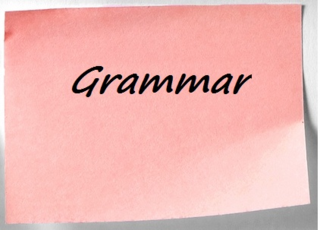 disrespectful! Or maybe where an individual’s official title is concerned, writers show too much respect. There are two easy rules to follow:
disrespectful! Or maybe where an individual’s official title is concerned, writers show too much respect. There are two easy rules to follow:
g Capitalize an individual’s official title if it appears immediately before the person’s name.
RIGHT: Commanding the USS Enterprise is Captain James T. Kirk.
WRONG: James T. Kirk is captain of the USS Enterprise.
RIGHT: The captain of the USS Enterprise hazed at the viewscreen.
WRONG: The Captain of the USS Enterprise hazed at the viewscreen.
g Capitalize the official title if it’s in a quotation in which someone is addressing the person holding that title.
RIGHT: “Save me from the alien monster, Captain!
WRONG: “Save me from the alien monster, captain!”
Need an editor? Having your book, business document or academic paper proofread or edited before submitting it can prove invaluable. In an economic climate where you face heavy competition, your writing needs a second eye to give you the edge. I can provide that second eye.
Related articles
 Some good counsel: Advisor vs. Adviser
Some good counsel: Advisor vs. Adviser Tighten writing by cutting begin fallacy
Tighten writing by cutting begin fallacy Your story: Thrusts and counterthrusts
Your story: Thrusts and counterthrusts
September 17, 2013
Coax readers to eat your story’s veggies
If you 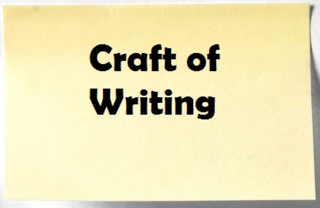 want to impress readers, then give them a cookie. A term coined by CSFW’s David Smith, a cookie is some item in the text that rewards readers paying close attention to the story.
want to impress readers, then give them a cookie. A term coined by CSFW’s David Smith, a cookie is some item in the text that rewards readers paying close attention to the story.
A cookie might be a clever turn of phrase, a powerful descriptive image, or an allusion. While the cookie may not be necessary to the telling of the story (just as a cookie isn’t necessary to a meal), it does add to the tale by enriching it (sort of like desert after you’ve eaten your veggies).
This is unlike “card tricks in the dark” in which writers shows off their talent in a way that slows the story – such as a humorous scene that’s included solely for the sake of the writer demonstrating that he or she can write a humorous scene.
Cookies also are a little different than an Easter egg, which usually is a hidden reference to something, such as using a word from another language that means “villain” as the name of a hostile alien race in a science fiction story. If readers don’t catch the reference, it won’t hurt the story, and hiding the Easter egg is done is such a way that it doesn’t slow the story. Cookies are much more obvious.
Why add cookies to the story? Because they encourage readers to pay even more attention to the tale – just as cookies for dessert encourage kids to eat all their peas and carrots during the main course. Such readers, hopefully, will grow to appreciate the writer’s abilities and then pick up more of his or her books.
In fact, other writers’ cookies probably are the reason you came to like reading them and books in general. Lazy and less able readers tend to miss cookies and so don’t get why so many people like a specific writer or book.
Need an editor? Having your book, business document or academic paper proofread or edited before submitting it can prove invaluable. In an economic climate where you face heavy competition, your writing needs a second eye to give you the edge. I can provide that second eye.
Related articles
 Delete bookisms in your story's dialogue
Delete bookisms in your story's dialogue Maintain 'fictional dream' when penning novel
Maintain 'fictional dream' when penning novel Place Easter egg to reward careful readers
Place Easter egg to reward careful readers Avoid card tricks in the dark when writing
Avoid card tricks in the dark when writing Avoid clever-author syndrome in storytelling
Avoid clever-author syndrome in storytelling
September 16, 2013
Strengthen story with man vs. himself conflict
Perhaps the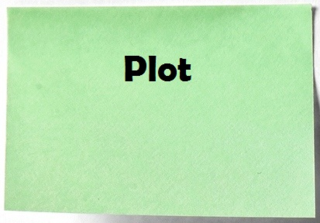 most profound conflict a character can face is coming into conflict with himself. Conflicts in which the protagonist faces off against other individuals or society often result in characters that represent ideals and concepts. But the character that first must deal with his own foibles to overcome a villain or oppressive values has learned something. He has grown as a character and become a better human being. Ideally, your readers will grow with this character, making his triumph more lasting in the readers’ minds.
most profound conflict a character can face is coming into conflict with himself. Conflicts in which the protagonist faces off against other individuals or society often result in characters that represent ideals and concepts. But the character that first must deal with his own foibles to overcome a villain or oppressive values has learned something. He has grown as a character and become a better human being. Ideally, your readers will grow with this character, making his triumph more lasting in the readers’ minds.
An example of a man vs. himself conflict is Anakin Skywalker’s internal struggle in “Star Wars III: Revenge of the Sith” in which the young jedi must decide if he will serve the powers of good or turn to the Dark Side. In this case, Skywalker makes the wrong choices and becomes the villain Darth Vader.
If handled correctly, a man vs. himself conflict can raise a story to high art. The “Star Trek: The Original Series” episode “The City on the Edge of Forever,” in which Captain Kirk must decide between his love of a woman and his responsibility to the future of humanity, is modern tragedy. In Stanslaw Lem’s “Solaris”, a psychologist is reunited with what appears to be his wife but in reality is an amalgam of his memories of her. The result is an intense psychological struggle worthy of the best contemporary literature.
Arguably, your story gains sophistication when your main character must overcome a challenge other than defeating the forces of nature or a straight villain. To survive being marooned on a desert world or succeed in taking down an alien menace, your main character ought to first have to overcome some internal conflict that in turn allows him to be victorious over nature or invader. For example, in Anne McCaffrey’s short story “The Smallest Dragonboy,” the main character Keevan must learn self-discipline and gain self-confidence to achieve his goal of becoming a dragonrider. In doing so, he overcomes the story’s wider challenge of being ridiculed by the other older and stronger boys.
Your story almost always is better when a man vs. himself conflict rests at its core.
Need an editor? Having your book, business document, or academic paper proofread or edited before submitting it can prove invaluable. In an economic climate where you face heavy competition, your writing needs a second eye to give you the edge. I can provide that second eye.
Related articles
 Start story with event that upsets status quo
Start story with event that upsets status quo Pit story's hero against society to create conflict
Pit story's hero against society to create conflict Use Man vs. God(s) conflict to heighten tension
Use Man vs. God(s) conflict to heighten tension Unfold action to develop a stronger story
Unfold action to develop a stronger story Draw readers into story with great opening lines
Draw readers into story with great opening lines
Strengthen story with him vs. himself conflict
Perhaps the most profound conflict a character can face is when he comes into conflict with himself. Conflicts in which the protagonist faces off against other individuals or society often result in characters that represent ideals and concepts. But the character that first must deal with his own foibles in order to overcome a villain or oppressive values has learned something. He has grown as a character and become a better human being. Ideally, your readers will grow with this character, making his triumph over others more lasting in the readers’ minds.
most profound conflict a character can face is when he comes into conflict with himself. Conflicts in which the protagonist faces off against other individuals or society often result in characters that represent ideals and concepts. But the character that first must deal with his own foibles in order to overcome a villain or oppressive values has learned something. He has grown as a character and become a better human being. Ideally, your readers will grow with this character, making his triumph over others more lasting in the readers’ minds.
An example of man vs. himself conflict is Anakin Skywalker’s internal struggle in “Star Wars III: Revenge of the Sith” in which the young jedi must decide if he will serve the powers of good or turn to the Dark Side. In this case, Skywalker makes the wrong choices and becomes the villain Darth Vader.
If handled correctly, a man vs. himself conflict can raise a story to high art. The “Star Trek: The Original Series” episode “The City on the Edge of Forever” in which Captain Kirk must decide between his love of a woman and his responsibility to the future of humanity is modern tragedy. In Stanslaw Lem’s “Solaris”, a psychologist is reunited with what appears to be his wife but in reality is an amalgam of his memories of her. The result is an intense psychological struggle worthy of the best contemporary literature.
Arguably, your story gains sophistication when your main character must do overcome a challenge other than defeating the forces of nature or a straight villain. To survive being marooned on a desert world or succeed in taking down an alien menace, your main character ought to first have to overcome some internal conflict that in turn allows him to be victorious over nature or invader. For example, in Anne McCaffrey’s short story “The Smallest Dragonboy,” the main character Keevan must learn self-discipline and gain self-confidence to achieve his goal of becoming a dragonrider. In doing so, he overcomes the story’s wider challenge of being ridiculed by the other older and stronger boys.
Your story almost always is better when a man vs. himself conflict rests at its core.
Need an editor? Having your book, business document or academic paper proofread or edited before submitting it can prove invaluable. In an economic climate where you face heavy competition, your writing needs a second eye to give you the edge. I can provide that second eye.
Related articles
 Start story with event that upsets status quo
Start story with event that upsets status quo Pit story's hero against society to create conflict
Pit story's hero against society to create conflict Use Man vs. God(s) conflict to heighten tension
Use Man vs. God(s) conflict to heighten tension Unfold action to develop a stronger story
Unfold action to develop a stronger story Draw readers into story with great opening lines
Draw readers into story with great opening lines
September 15, 2013
What to look for when revising your manuscript
As writers,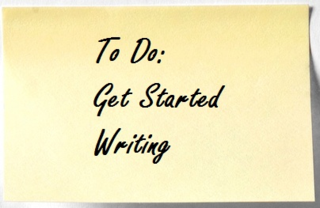 often we are our own worst critics. We’re typically either too ruthless or not critical enough of our own stories and articles! Worse, we sometimes even hate the good parts of our manuscript and love the poorly written sections.
often we are our own worst critics. We’re typically either too ruthless or not critical enough of our own stories and articles! Worse, we sometimes even hate the good parts of our manuscript and love the poorly written sections.
The challenge then is to know when and how to revise our own writing.
Revising involves patching up and reworking our story. It may require writing new sections or even just starting over. It’s sometimes referred to as “rewriting” or “drafting.”
No matter how good we think our story might be, we need to revise, if only to proofread the piece. Rarely do authors write the perfect piece in their first draft. In addition to typos, there may be structural problems with the manuscript, ranging from word choice to organizational issues.
Three general areas you might revise the manuscript for include:
g Language arts class issues (grammar, spelling, punctuation, capitalization)
g Structural issues (plot, characters, point of view, etc.)
g Style issues (get rid of the fluff, use active voice, tighten dialogue, etc.)
Most of this blog’s entries are about specific structural and style flaws that can hamper your writing. Troll through it for suggestions about how to address such problems when revising.
Since writers are close to their work – a universe for the story that is in the writer’s head always is larger than the universe for the story on paper – they often may not recognize what needs to be revised. To remove yourself from the story to determine what needs to be revised, set it aside for a few days, then reread. You’ll likely notice that what sounded great when you first penned it is now problematic. Another solution is to have it critiqued by others…not by a spouse, parents, family members or close friends but by someone who writes, reads or edits for a living (Full disclosure here: I own and run such a critiquing service.). In addition, have just one or two readers/editors look it over – if you give it to too many people, you’ll likely receive conflicting advice that only will make revising more difficult, if not impossible.
A final note: While analyzing your own draft, deconstructing the piece into the various elements of fiction (plot, setting, character, point of view, theme, style, etc.) can be beneficial. However, revising the manuscript by focusing on one element at a time probably isn’t. These elements work together to make an integrated whole, and so the story needs to be approached holistically.
Need an editor? Having your book, business document or academic paper proofread or edited before submitting it can prove invaluable. In an economic climate where you face heavy competition, your writing needs a second eye to give you the edge. I can provide that second eye.
Related articles
 Self-discipline to write a daily a must
Self-discipline to write a daily a must How to overcome annoying writer's block
How to overcome annoying writer's block Common 'first draft-itis' symptoms to look for
Common 'first draft-itis' symptoms to look for Drafting: Write on paper or type on computer?
Drafting: Write on paper or type on computer? Draft rarely perfect after first go-round
Draft rarely perfect after first go-round
September 14, 2013
Short stories vs. novellas vs. novels
You’re at a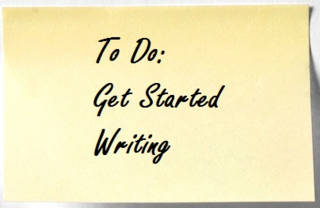 coffee shop or a party or a writer’s workshop, and someone asks you what you are writing – a short story or a novel? You pause for a moment, wondering if what you’re really writing is a novella. So what is it?
coffee shop or a party or a writer’s workshop, and someone asks you what you are writing – a short story or a novel? You pause for a moment, wondering if what you’re really writing is a novella. So what is it?
There’s no hard or fast rule about what is a short story, what is a novella and what is a novel. It’s largely a subjective matter for which editors and publishers assign arbitrary numbers based on their needs and available space. To avoid confusion, this site follows the word counts used in the Hugo and Nebula contests:
g Short story - 7,500 words or less
g Novelette - 7,501-17,500 words (many editors simply lump this category into either the short story or the novella groupings)
g Novella - 17,501-40,000 words
g Novel - 40,001 or more words
Some stories are better told in one category rather than another. So when deciding how long your story will be, think about the advantages and disadvantages of each category and which one best serves your tale.
Short stories and novelettes
Advantages:
g Easier for author to maintain consistency of purpose as there are fewer characters and settings, so better dramatic and thematic unity
g Practical for authors; you can complete it more quickly, often in days or weeks
g Good place for new writers to start to build their reputation and garner a novel deal
Disadvantages:
g Limited platform as short stories may offer too narrow of a framework for the author to tell his sweeping story
g Don’t make much money
Novellas and novels
As you probably can guess, the advantages and disadvantages of the novel are virtually opposite of those for the short story.
Advantages:
g Larger scale for developing ideas and characters
g Can introduce characters and settings at a more leisurely rate than a short story
g Plots can be far more intricate than short stories
g Make more money and build broader reputation
Disadvantages:
g Can be too large of a platform for new writers to handle
g Too broad of a framework for the author to tell a more narrow in scope story
Clearly, there’s far more to consider than word count when selecting which story format you’ll use. As science fiction author and editor Jack Williamson once said, “Jim Gunn said a long time ago that the novelette is the best length for science fiction because it has space to develop the characters and the idea and pose the question but doesn’t have to answer the question. A novel should.”
In short, you must let the story dictate its length.
Need an editor? Having your book, business document or academic paper proofread or edited before submitting it can prove invaluable. In an economic climate where you face heavy competition, your writing needs a second eye to give you the edge. I can provide that second eye.
Related articles
 Maintain 'fictional dream' when penning novel
Maintain 'fictional dream' when penning novel 'Murder your darlings' to better engage readers
'Murder your darlings' to better engage readers How to find time to write your next book
How to find time to write your next book Consider organizing short stories into fix-it novel
Consider organizing short stories into fix-it novel Editing client releases short story anthology
Editing client releases short story anthology
September 13, 2013
Add contact page to your book’s website
Another page you’ll definitely want to have on the website promoting your book is a Contact page. This page provides information about how to reach the author or whoever is responsible for handling your communications (executive assistant, agent, manager, etc.).
you’ll definitely want to have on the website promoting your book is a Contact page. This page provides information about how to reach the author or whoever is responsible for handling your communications (executive assistant, agent, manager, etc.).
The page is absolutely necessary for anyone seeking media coverage. Even though he may have sent out press releases or media kits with your contact information on it, sometimes reporters or bloggers who haven’t received that information (or who have misplaced it) will stumble across your website. Especially if you’ve authored a nonfiction book and so can be considered an expert on the subject at hand, the media may wish to contact you.
The downside of the Contact page is fans, spammers and crazy exes also will know how to reach you. If you worry about that, you probably want to leave off some contact information.
Generally, your Contact page should contain at least one of the following:
g Email address – Most turnkey websites offer email services. You may want to set up an email account that all book-related communication goes through so that your regular email account isn’t available to the general public. Further – and while this will allow spammers to hit you – set up a link on the page so that simply by clicking the address someone immediately can email you.
g Mailing address – If concerned about receiving unwanted snail mail, set up a business P.O. box where letters can be sent and received. Of course, you’ll have to pay for the box, raising your self-publishing costs.
g Telephone number – Don’t forget to include the area code. This also might be set up so that those with the service simply can click onto the number and dial you from their computer.
g Fax – Ditto the telephone number instructions.
I only include my email address on my Contact page (I’ve got some crazy exes.). However, I do include on my page this note for the media: “If a journalist seeking a phone interview with Rob, please send him an email indicating your name, credentials (name of organization and your position there), and the day and time when you would like to speak with him. Include your phone number. He then will contact you for a call back.” A quick web search always has revealed if the person emailing me was legit or not (Though I suppose they could have been impersonating a reporter – still, what are the odds of that?).
Finally, headers for this simple page can range from “Contact” or “Reach the Author”.
Need an editor? Having your book, business document or academic paper proofread or edited before submitting it can prove invaluable. In an economic climate where you face heavy competition, your writing needs a second eye to give you the edge. I can provide that second eye.
Related articles
 How to write a press release for your book
How to write a press release for your book Where to send media kit promoting your book
Where to send media kit promoting your book Decide what your book's website will look like
Decide what your book's website will look like Pages needed for website promoting your book
Pages needed for website promoting your book How to construct your website's home page
How to construct your website's home page
September 12, 2013
Writing your nonfiction book’s bibliography
If writing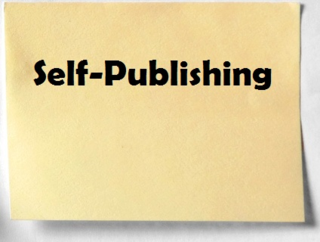 a nonfiction book, you’ll likely want to include a bibliography at the end of your book. This offers a list of other books, periodicals and online sources where you acquired information to write your book. It typically appears before the index.
a nonfiction book, you’ll likely want to include a bibliography at the end of your book. This offers a list of other books, periodicals and online sources where you acquired information to write your book. It typically appears before the index.
Of course, there’s the possibility that you drew entirely upon your expertise to write the book and did no research. A bibliography then isn’t needed. But that’s rare. Most writers invariably borrow information for other writers, and giving others credit for their ideas or research is only fair.
It’s also only fair to readers. They then can go to your source and see how accurately you quoted or paraphrased that book/periodical/online source. A bibliography also allows readers to identify other pieces that they might be interested in looking at for their own pleasure or professional interest.
The format for a bibliography in large part depends upon the field of study you’re writing about. For example, if you’re writing about anything related to the academic study of English and foreign languages as well as the humanities, you probably will use MLA (Modern Language Association) formatting. Those in some of the sciences and education fields use APA (American Psychological Association) format, while those in the medical professions use AMA (American Medical Association) format. And there are more. The styles for each format are available online at each association’s website.
You’ll want to make sure that you get the formatting right. Though tedious, it is a sign of professionalism. As you’re self-publishing, you’ve got a strike going against you as there’s still a great bias against books that aren’t printed by mainstream publishers. Correctly doing the bibliography will go a long way in ensuring your book is taken seriously.
Need an editor? Having your book, business document or academic paper proofread or edited before submitting it can prove invaluable. In an economic climate where you face heavy competition, your writing needs a second eye to give you the edge. I can provide that second eye.
Related articles
 How to write an author's bio
How to write an author's bio How to construct your website's home page
How to construct your website's home page Offer readers a sample chapter page on website
Offer readers a sample chapter page on website How to find time to write your next book
How to find time to write your next book Get it right, all right vs. alright
Get it right, all right vs. alright
September 11, 2013
All in order: Follow up vs. follow-up vs. followup
Get the use of these words wrong, and an editor likely will have to follow up with the admonition to better proofread your writing next time.
Follow-up with a hyphen can be used in two ways:
g An adjective meaning “following an earlier event”: The reporter made a follow-up call to double check his facts.
g A noun meaning “an event that follows an earlier one”: After breaking the news story, the reporter wrote a follow-up for the next issue.
Follow up with no hyphen has a third meaning. It’s a verb showing what one is doing: After covering the fatal accident, the reporter will follow up with a story about the deceased’s life.
“Followup” with no space or hyphen sometimes is used as a replacement for “follow-up.” Editors and instructors generally eschew this spelling, however.
Need an editor? Having your book, business document or academic paper proofread or edited before submitting it can prove invaluable. In an economic climate where you face heavy competition, your writing needs a second eye to give you the edge. I can provide that second eye.
Related articles
 Constructive tip: Build up vs. build-up vs. buildup
Constructive tip: Build up vs. build-up vs. buildup Get it right, all right vs. alright
Get it right, all right vs. alright Getting focused on close up vs. close-up
Getting focused on close up vs. close-up How to find a good editor or proofreader
How to find a good editor or proofreader
September 10, 2013
Improve your writing by dumping fuzzy words
To really 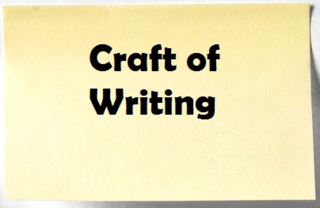 improve your writing, your words should be very specific and read maybe something like what you’d find in a story that’s no so loosely written.
improve your writing, your words should be very specific and read maybe something like what you’d find in a story that’s no so loosely written.
Huh?
The problem with the above advice is it’s riddled with fuzzy words – or words that aren’t precise: really, very, maybe, something like, no so loosely. Such words weaken your writing by giving an inexact, out-of-focus picture of the landscape or idea that you’re portraying. Other fuzzy words include almost, half- , very, really, seem, looked like, and felt.
They’re also known as “weasel words,” because as a writer, you have a responsibility to be precise. By using fuzzy words, though, the writer fails to do the hard work of writing and instead behaves like an optometrist who does a sloppy job and hands a customer a pair of glasses in which the prescription is slightly off.
The opening sentence would be greatly improved if rewritten as: To improve your writing, your words should be specific, like those in a tightly constructed story.
As with any rule, there’s an exception, of course. Fuzzy words might be used in dialogue to show that a character has an imprecise sense of what occurred (“I only got a glimpse – it looked to be almost eight feet tall.”) or when that character is being deceptive (He suppressed a grimace. “It’s very good,” he said, not looking up.).
Need an editor? Having your book, business document or academic paper proofread or edited before submitting it can prove invaluable. In an economic climate where you face heavy competition, your writing needs a second eye to give you the edge. I can provide that second eye.
Related articles
 Delete bookisms in your story's dialogue
Delete bookisms in your story's dialogue Tighten writing by cutting begin fallacy
Tighten writing by cutting begin fallacy Get it entirely right: All together vs. altogether
Get it entirely right: All together vs. altogether Get it right, all right vs. alright
Get it right, all right vs. alright Getting focused on close up vs. close-up
Getting focused on close up vs. close-up



